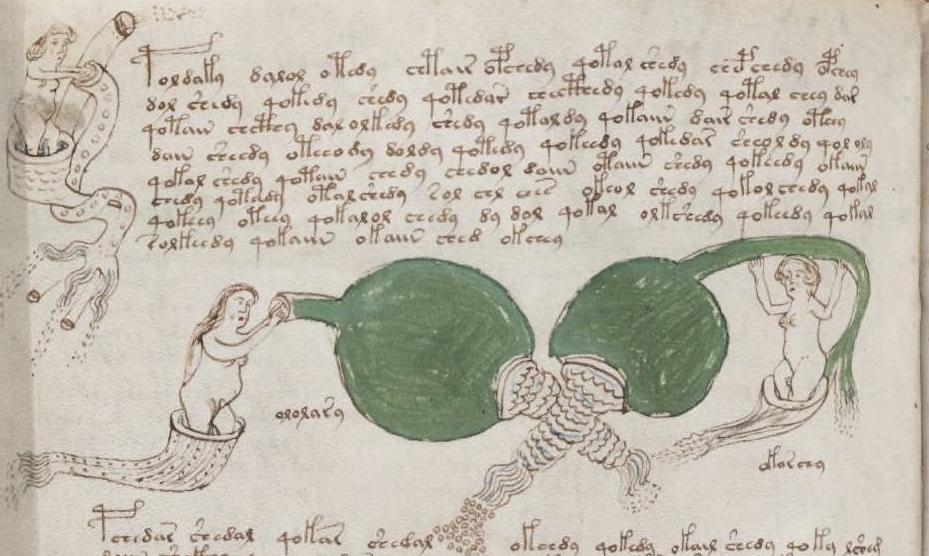Ever heard of the Voynich manuscript? No?
It’s a document named after Wilfred Voynich, a Polish book dealer who in 1912 purchased the manuscript. In the years since, the manuscript has been carbon dated to being made in the early 15th Century, some 600 years ago. The manuscript is filled with wild images and even wilder notations. Notations that no one has been able to decipher, at least not until now.
In the years since the manuscript’s discovery many, many people have scrutinized the work and tried to decipher whatever is written on it. To date, no one has figured out what the notations mean, leading some to consider the possibility that the manuscript’s writings are nothing more than gibberish and mean nothing.
Here are some images of the famous (infamous!?) document (wanna see more? Google Voynich manuscript then check out the vast amount of images available on the web!):



Now, however, and according to George Dvorsky at gizmodo.com…
Artificial intelligence may have cracked 600 year old manuscript
I won’t give away everything presented within the article but here is the key paragraph presented in the article:
For Greg Kondrak, an expert in natural language processing at the University of Alberta, (decoding the Voynich manuscript) seemed a perfect task for artificial intelligence. With the help of his grad student Bradley Hauer, the computer scientists have taken a big step in cracking the code, discovering that the text is written in what appears to be the Hebrew language, and with letters arranged in a fixed pattern. To be fair, the researchers still don’t know the meaning of the Voynich manuscript, but the stage is now set for other experts to join the investigation.
From a little later in the article:
For the final step, the researchers deciperhered the opening phrase of the manuscript, and presented it to colleague Moshe Koppel, a computer scientist and native Hebrew speaker. Koppel said it didn’t form a coherent sentence in Hebrew.
“However, after making a couple of spelling corrections, Google Translate [was] able to convert it into passable English: ‘She made recommendations to the priest, man of the house and me and people,’” wrote the researchers in the study, which now appears in Transactions of the Association of Computational Linguistics.
Fascinating, no?
Assuming these people are on the right path and the mysterious manuscript is indeed on the verge of being decoded, I wouldn’t be terribly surprised if nothing terribly earth shattering comes from the actual writings, perhaps musings that while illuminating to the times, don’t mean all that much to us today.
Then again, I could be wrong and, I must say, it would be incredibly fascinating if I were so proven! 😉
